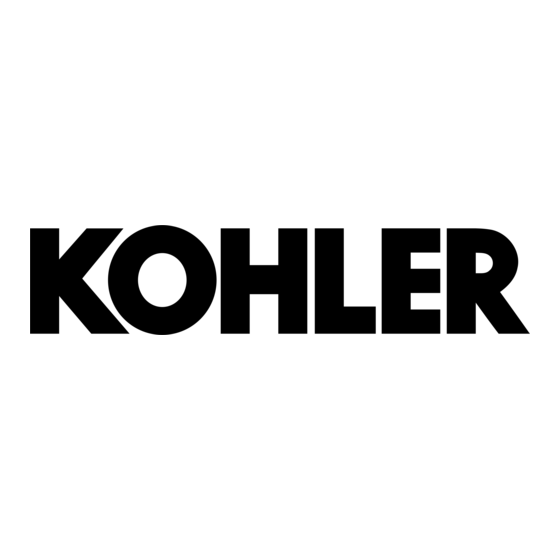3. Start the engine by activating the key switch.
Release the switch as soon as the engine starts.
Return choke to off position aft er engine starts.
On a cold engine, it may be necessary to leave
choke partially on until engine begins to warm
up.
NOTE: Do not crank the engine continuously
for more than 10 seconds at a time.
If the engine does not start, allow a
60 second cool down period between
starting att empts. Failure to follow
these guidelines can burn out the starter
motor.
NOTE: If the engine develops suffi cient speed to
disengage the starter but does not keep
running (a false start), engine rotation
must be allowed to come to a complete
stop before att empting to restart the
engine. If the starter is engaged while
the fl ywheel is rotating, the starter
pinion and fl ywheel ring gear may clash,
resulting in damage to the starter.
If the starter does not turn the engine over, shut off
starter immediately. Do not make further att empts to
start the engine until the condition is corrected. Do not
jump start using another batt ery (refer to Batt ery). See
your Kohler Engine Service Dealer for trouble analysis.
NOTE: Upon start-up, a metallic ticking may occur.
This is caused by hydraulic lift er leakdown
during storage. Run the engine for 5 minutes.
The noise will normally cease in the fi rst
minute. If noise continues, run the engine at
mid-thrott le for 20 minutes. If noise persists,
take the engine to your local Kohler Service
outlet.
Stopping
LPG Fueled Engines
1. Remove the load by disengaging all PTO driven
att achments.
2. Turn fuel valve on LPG tank to full closed
position and allow the engine to continue running
until it runs out of fuel. Turn ignition switch to off
position.
In an emergency, move the thrott le control to
stop or turn the ignition switch off .
NOTE: Backfi ring may occur when using the
emergency stop method!
NG Fueled Engines
1. Remove the load by disengaging all PTO driven
att achments.
2. Turn fuel valve on NG line, if equipped, to full
closed position and allow the engine to continue
running until it runs out of fuel. Turn ignition
switch to off position. Switching off the ignition
prior to allowing the engine run out of fuel may
create a backfi re.
Battery
A 12 volt batt ery is normally used. Refer to the
operating instructions of the equipment this engine
powers for specifi c batt ery requirements.
If the batt ery charge is not suffi cient to crank the
engine, recharge the batt ery (see page 12).
Operating
Angle of Operation
This engine will operate continuously at angles up to
25°. Check oil level to assure crankcase oil level is at
the F mark on the dipstick.
Refer to the operating instructions of the equipment
this engine powers. Because of equipment design or
application, there may be more stringent restrictions
regarding the angle of operation.
NOTE: Do not operate this engine continuously
at angles exceeding 25° in any direction.
Engine damage could result from insuffi cient
lubrication.
Cooling
NOTE: If debris builds up on the fl ywheel screen
or other cooling areas, stop the engine
immediately and clean. Operating the engine
with blocked or dirty air intake and cooling
areas can cause extensive damage due to
overheating.
WARNING: Hot Parts!
Engine components can get extremely hot from operation.
To prevent severe burns, do not touch these areas while
the engine is running, or immediately aft er it is turned
off . Never operate the engine with heat shields or guards
removed.
Engine Speed
NOTE: Do not tamper with the governor sett ing
to increase the maximum engine speed.
Overspeed is hazardous and will void the
engine warranty. The maximum allowable
high speed for these engines is 3750 RPM, no
load.
7

